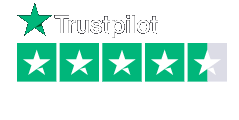What is a truly qualified lead?
This question is getting harder and harder to answer in the ever expanding world of marketing. With phrases flying around like sales qualified leads (SQL’s) and marketing qualified leads (MQL’s), it’s not as simple as it used to be, but it is vital that it’s understood.
So what does all the jargon mean?
The answer may seem complicated, however we can talk you through the journey. We’ve come up with a simple guide to the stages of lead qualification to help see you through.
Contact
Pretty self-explanatory, a contact is someone who you have the contact details for. Generally you would find contacts in places like your CRM, mailing lists or maybe you have their business card. This does not automatically make them a lead. They have the potential to move down the funnel but only a small percentage will.
It’s important that you’re not selling at people too early, this will put them off from being a potential customer if they’re not ready.
Lead
A lead in its simplest form is someone who gets in contact with your company or business, willingly gives you their information via a form submission, for example, or reaches out to you on social media.
While this is all well and good, usually only 25% of these generic leads are actually legitimate and will typically result in sales. Which is why these following terms have emerged.
Marketing Qualified Leads (MQL’s)
A marketing qualified lead or MQL is a lead that is considered more likely to become a customer. Usually this is calculated using a method called lead scoring, which is based on factors such as:
-
Buyer personas — Does this person fit in with you predetermined buyer personas, if not then you’re probably wasting your time. We make buyer personas, so we have a good clear knowledge of who our ideal customer is, why ignore it?
-
Buyer behaviour — Similar to your buyer personas, you can develop criteria for what to look for in terms of the lead’s buyer behaviour. Is there a theme in the pages they visit most? Have they attended the same webinar as a previous customer? It’s all about finding things that can relate them to your past buyers.
-
Interaction — How did you get the lead’s information? You can tell a lot about how and what someone is interested in based on what they wanted in exchange for submitting their info. Was it a free e-book? A guide? Or possibly even a 15-minute strategy call? These can help you identify at what stage of the buyer's journey they are at.
The MQL is the longest process as they need to be vetted before they’re ready to go to your sales team.
Sales Qualified Leads (SQL’s)
Once your MQL hans been sufficiently investigated, it is ready to be passed on to become an SQL.
This means that the lead is ready to spoken to by your sales team.
So what now?
Firstly, before you start to sell to your new potential client, do the research. We know they came down your marketing funnel but which route did they take? Do your best to understand their individual journey that way you’ll be able to work better together.
Have the conversation with them. Do their needs match your solution? Now is the time to talk with them, not at them. You want to make sure they get what they need as well as the best you can offer.
Remember: Don't try to rush this process and start selling too early to people who don’t know they want what you have to offer yet. You are more likely to convert a lead if they follow through this buyer's journey.
By classifying your leads and communicating to them based on where they are in the sales funnel, your chances of converting to sale are much higher.










